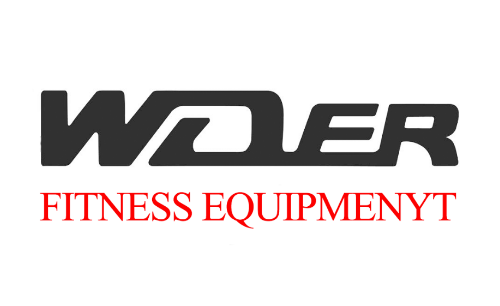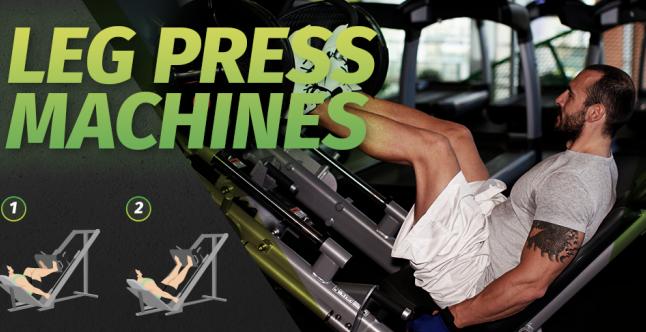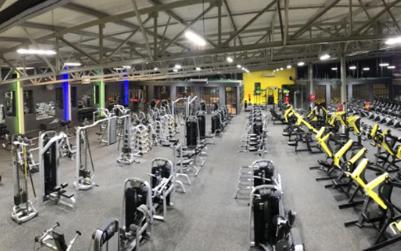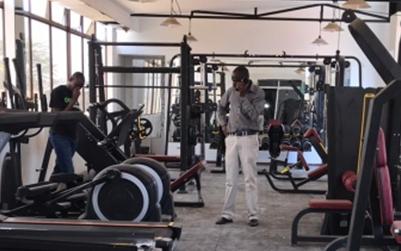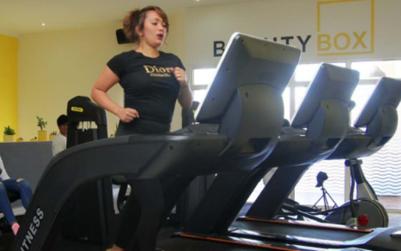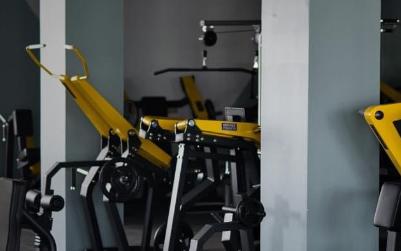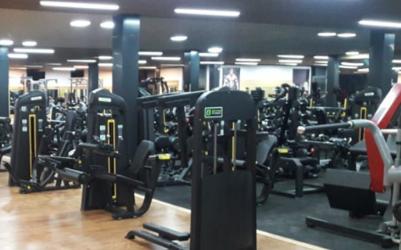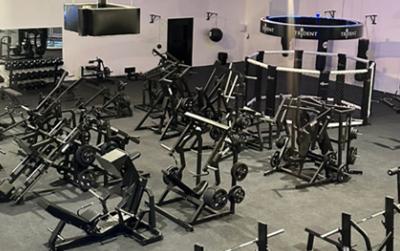How Vertical Traction Machines Revolutionize Elevator Efficiency
Vertical traction machines have become a cornerstone of modern elevator systems, significantly enhancing their efficiency and performance. These machines utilize a system of ropes and pulleys that are driven by an electric motor, allowing for smooth and effective vertical transportation in buildings. This section explores how vertical traction machines have revolutionized elevator efficiency and their broader implications in the construction and design of modern buildings.
Understanding Vertical Traction Machines
At the heart of vertical traction machines is the principle of lifting or lowering a cab through the coordinated movement of cables or belts. Unlike traditional hydraulic elevators, which rely on fluid pressure, vertical traction machines provide a more energy-efficient method of elevating passengers. This efficiency stems from several key factors:
- Energy Use: Vertical traction machines consume less power during operation as they only use energy when moving.
- Weight Distribution: The design allows for a balanced load, minimizing energy waste while lifting.
- Speed and Performance: These machines can achieve higher speeds, making them ideal for mid to high-rise buildings.
Benefits of Vertical Traction Machines
Incorporating vertical traction machines in elevator systems yields numerous benefits:
- Reduced Operating Costs: Lower energy consumption translates into decreased operating costs, making these elevators economically viable for building owners.
- Space Efficiency: Vertical traction systems require less space than their hydraulic counterparts, allowing for more flexible building designs.
- Lower Maintenance Requirements: With fewer moving parts compared to hydraulic systems, vertical traction machines typically require less maintenance.
- Environmental Impact: Less energy use leads to a smaller carbon footprint, aligning with modern sustainability goals.
Enhancing User Experience
The design and functionality of vertical traction machines also contribute to an enhanced user experience:
- Smooth Operation: Modern vertical traction machines provide a quieter and smoother ride, improving passenger comfort.
- Fast Response Times: Quick acceleration and deceleration times ensure that passengers spend less time waiting for their ride.
- Advanced Safety Features: Many vertical traction systems are equipped with safety mechanisms that enhance passenger safety, including emergency braking systems and overload detection.
Impact on Building Design
From the architectural perspective, vertical traction machines facilitate innovative building designs:
- High-Rise Solutions: As buildings grow taller, vertical traction machines offer the necessary lifting capabilities while optimizing available space.
- Flexible Configuration: Architects can design elevators that fit seamlessly into their building’s aesthetics and layout, thanks to the compact nature of vertical traction systems.
- Future-Proofing Designs: These machines allow for the inclusion of smart technology, providing capabilities for predictive maintenance and remote monitoring.
In conclusion, vertical traction machines have transformed elevator efficiency, offering a range of benefits that cater to modern architectural and operational needs. As buildings continue to grow taller and urbanization increases, the role of these machines will only become more critical in creating sustainable, efficient, and passenger-friendly vertical transportation systems. Embracing these technologies is not merely an upgrade; it's a necessary step toward the future of urban mobility.
What You Need to Know About Vertical Traction Machines and Their Benefits
Vertical traction machines play a crucial role in modern elevator systems, forming the backbone of vertical transport in buildings of all heights. Understanding their mechanics and advantages is essential for architects, engineers, building managers, and anyone involved in the construction and maintenance of vertical transportation systems.
Understanding Vertical Traction Machines
At its core, a vertical traction machine operates using a simple but effective mechanism. It consists of a motor, sheaves (pulleys), and ropes that work together to move an elevator car vertically. These machines can be classified into two main types: geared and gearless, with each offering unique advantages depending on the application.
How Vertical Traction Machines Work
The operation of vertical traction machines revolves around the following components:
- Motor: Provides the necessary power to lift and lower the elevator car.
- Sheaves: These are the pulleys around which the ropes move. They are critical in determining the efficiency and smoothness of the elevator's movement.
- Ropes: Typically made from high-strength steel, these connect the elevator car to the counterweight, allowing for a balanced and efficient lifting mechanism.
Benefits of Vertical Traction Machines
Vertical traction machines offer numerous benefits that make them a popular choice for both new construction and elevator modernization projects. Here are some of the key advantages:
- Energy Efficiency: Vertical traction machines, especially gearless models, are designed to use significantly less energy compared to hydraulic systems. This efficiency translates into lower operational costs and reduced environmental impact.
- Smoother Operation: The traction-based mechanism provides a smooth and quiet ride, enhancing passenger comfort during travel, which is especially important in high-rise buildings.
- Higher Speed Capabilities: These machines can accommodate higher speeds, making them suitable for taller buildings where rapid vertical transportation is crucial.
- Space-Saving Design: Vertical traction machines require less space than hydraulic systems, which is beneficial in urban environments with limited shaft dimensions.
- Longevity and Durability: Built with high-quality materials and advanced technology, vertical traction machines tend to have longer lifespans, resulting in reduced maintenance costs and fewer disruptions.
Considerations for Implementation
While vertical traction machines have numerous advantages, there are several factors to consider when implementing these systems in new or existing buildings:
- Load Capacity: Ensure that the vertical traction machine is selected based on the expected load and traffic demands of the building.
- Pit Depth: The design and installation of vertical traction machines require specific pit depth and overhead clearance, particularly for high-speed applications.
- Maintenance Needs: Regular maintenance is essential to keep the system operating efficiently, preventing breakdowns and ensuring safety.
In conclusion, vertical traction machines represent a vital component of contemporary elevator systems. Their unique design not only enhances energy efficiency and operational reliability but also improves the overall passenger experience. As technology continues to evolve, the benefits and applications of vertical traction machines will likely expand, reinforcing their importance in the context of vertical transportation in modern infrastructure.
The Role of Vertical Traction Machines in Sustainable Building Design
As the world increasingly embraces sustainability, the construction and operation of buildings must evolve to meet these new standards. One significant aspect of this evolution is the integration of vertical transportation systems, particularly vertical traction machines, which play a pivotal role in enhancing the energy efficiency and overall sustainability of buildings. This section explores how vertical traction machines contribute to sustainable building design and the advantages they offer.
Efficiency and Energy Savings
Vertical traction machines are engineered to provide efficient and reliable movement between floors in multi-story buildings. Their design enables them to use energy more effectively compared to traditional hydraulic systems, resulting in significant energy savings. Key features that support their efficiency include:
- Regenerative Drives: Many modern vertical traction machines are equipped with regenerative drives that capture excess energy generated during the descent of elevators. This energy can be redirected back into the building's power system, reducing overall energy consumption.
- Lightweight Components: The use of lighter materials in vertical traction machine construction decreases the total weight of the elevator system, requiring less power to operate.
- Variable Speed Control: Unlike traditional elevators that operate at a constant speed, vertical traction machines can adjust their speed based on the building's demand, further improving energy efficiency.
Space-Saving Design
In sustainable building design, maximizing usable space is essential. Vertical traction machines provide a compact solution that allows for optimal space allocation within the building. Their smaller footprint means:
- More usable floor area for tenants and occupants.
- Reduced shaft sizes, leading to improved architectural flexibility.
- Less construction material needed, contributing to overall resource efficiency.
Enhancing User Experience
Sustainability is not solely about energy efficiency; it's also about creating an enjoyable and functional environment for building occupants. Vertical traction machines help enhance the user experience in several ways:
- Reduced Wait Times: Their efficient operation often translates into shorter wait times for elevators, which can significantly improve occupant satisfaction.
- Quiet Operation: Modern vertical traction machines are designed for quieter operation, contributing to a more pleasant building environment.
- Accessibility Features: Many vertical traction systems are designed with accessibility in mind, ensuring that all occupants can move freely within the building.
Compliance with Green Building Certifications
As more building codes and regulations focus on sustainability, incorporating vertical traction machines can aid compliance with green building certifications such as LEED (Leadership in Energy and Environmental Design). Their energy-efficient designs contribute to:
- Lowering the building's carbon footprint through reduced energy use.
- Achieving points in various certification categories, making it easier to meet sustainability goals.
In conclusion, vertical traction machines play a critical role in sustainable building design by enhancing energy efficiency, maximizing space utilization, improving user experience, and aiding in compliance with green building certifications. As architecture and construction continue to evolve towards greener practices, the significance of these systems will undoubtedly grow, paving the way for a more sustainable future in vertical transportation.
Future Trends in Vertical Traction Machines: Innovations and Advancements
As urbanization accelerates and the demand for efficient building transportation increases, vertical traction machines (VTMs) are evolving to meet future challenges. Innovations in technology, design, and sustainability are propelling VTMs into a new era, ensuring they remain a critical component of modern building infrastructure.
Smart Technology Integration
Vertical traction machines are increasingly incorporating smart technologies. These advancements promise to enhance performance, reduce energy consumption, and improve user experience. Key areas of innovation include:
- IoT Connectivity: Internet of Things (IoT) systems enable real-time monitoring of elevator performance, allowing for predictive maintenance and reducing downtime.
- Smart Control Systems: Advanced control algorithms optimize traffic flow and elevator efficiency, improving the overall function of the VTM during peak usage times.
- User Experience Enhancements: Mobile applications can provide users with real-time updates on wait times and availability, enhancing convenience.
Sustainable Design Features
As environmental concerns become increasingly prominent, the design of vertical traction machines is shifting towards sustainability. Future VTMs will likely incorporate:
- Energy Regeneration: New regenerative drives can capture and reuse energy generated during descent, significantly improving the energy efficiency of the system.
- Eco-Friendly Materials: Manufacturers are focusing on using sustainable materials in the production of VTMs, reducing the carbon footprint associated with elevator installation and maintenance.
- Reduced Standby Power Consumption: Innovations are being deployed to minimize energy use when elevators are idle, contributing to overall energy savings within buildings.
Enhanced Safety Features
Safety continues to be a paramount concern in the operation of vertical traction machines. New technologies are enhancing safety measures, including:
- Advanced Sensor Technology: Smart sensors can detect mechanical faults and irregularities, alerting maintenance teams before issues escalate into hazards.
- AI-Driven Safety Protocols: Artificial intelligence can analyze usage patterns and historical data to predict potential safety risks and automate emergency protocols.
- Improved Emergency Systems: Enhanced emergency communication systems and backup power supplies are being integrated, ensuring that passengers remain safe and informed during a power failure or system malfunction.
Modular and Space-Saving Designs
With urban environments becoming increasingly crowded, the demand for compact and efficient vertical traction machines is on the rise. Innovations in design are leading to:
- Space Optimization: Modular designs allow for easier installation in smaller spaces, making VTMs more versatile for diverse building types.
- Flexible Configurations: Customization options enable architects and builders to arrange VTMs in innovative ways, enhancing the overall aesthetic and functionality of a building.
- Reduced Machine Room Requirements: Machine-room-less (MRL) elevator systems are gaining popularity, further saving space while maintaining performance.
In conclusion, the future of vertical traction machines is poised for significant advancements driven by technology, sustainability, safety, and design efficiency. As these systems continue to evolve, they promise to become a more integral part of modern infrastructure, meeting the growing demands of urban populations while addressing environmental and safety concerns. The ongoing innovations in VTMs underscore their importance not only as functional transportation solutions but also as key components in promoting sustainable and efficient urban living.
